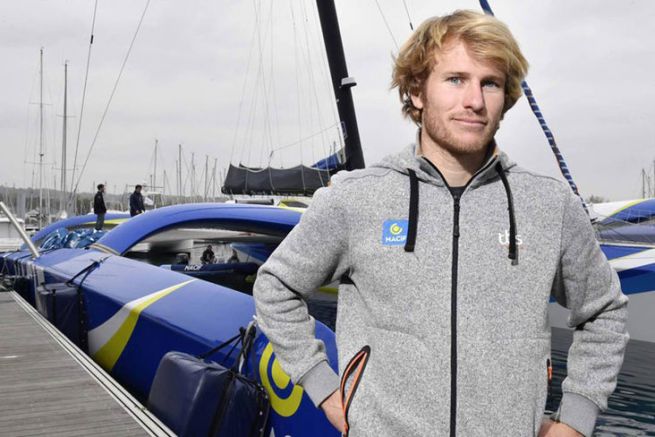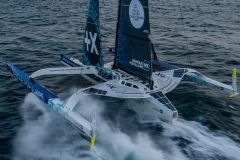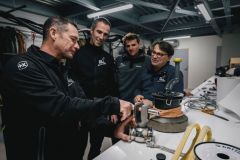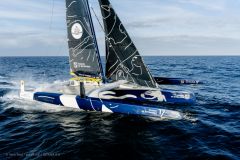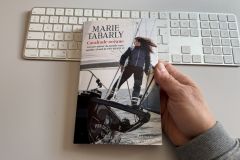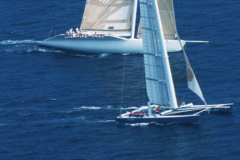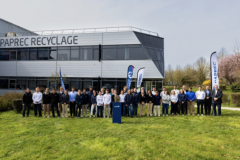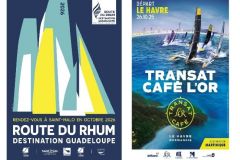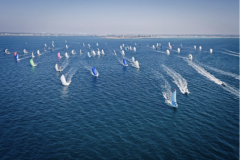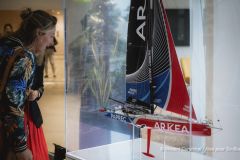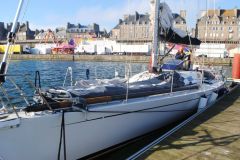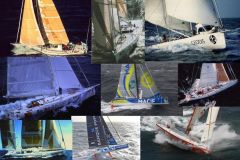Can you tell us about the boat and the improvements made to it?
After the round the world trip, we modified the boat in a rather substantial way. We changed the foils, the rudders, the boom, some of the sails, quite a few electronic and hydraulic systems. These are major modifications that lead to a significant change in the boat's behaviour. The boat flies fairly quickly.
You said you modified the foils. Are they geometric modifications or maintenance modifications?
These are new foils, new rudders with slightly different concepts. The foils are larger, thinner, thinner, thinner with a narrower rope: they are new parts. On the rudders they are also new parts with a different system. We had little rudders under vault. Now we have rudders on the transom that can be lifted. Before, we managed the rudder rake by modifying the upper bearing, whereas now we have a flap at the rear with a sensor. We are changing the system and the overall functioning.
The goal is to fly higher. To make it very simple, without betraying many secrets, the foils are bigger, longer which allows you to fly higher. They are thinner with more surface working, which makes it possible to fly earlier. At the back, we had small rudders so if we flew high enough the rudder would quickly come out of the water while there we manage to have a flight where the rudder works well and stays in the water.
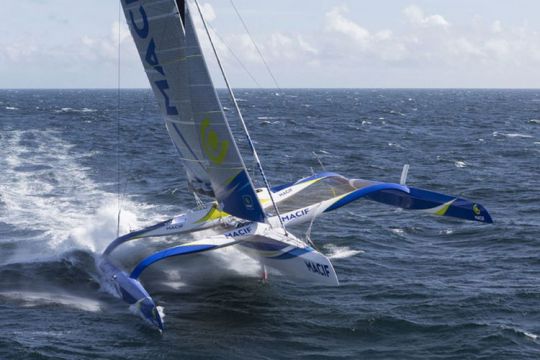
The boat has gained speed, is it at 100% of its potential or is there still something to do?
You're never 100% of the potential of a boat like this. We still have to learn. But we're not too bad, we launched it at the end of July 2018, so we had two and a half months to test it. I think we did most of the clearing and discovery of the boat, to make it more reliable. I'm not saying that nothing will happen to us in this race because obviously in offshore racing we can break. But we did a little brushing up on the ground. The large elements were checked under different wind conditions. What is amazing is the progress we have made with the site and the progress we have made since the launch. It's pretty crazy because in the end, with each navigation, we learned things and made progress. And every time we progress it's a gain of 1 knot or 2 knots! It's not tenths of a knot, it's really in knots that you count. It's quite exciting. I think it's far from over. We're going to continue to improve, maybe I'll continue to improve during the Route du Rhum. We're really at the beginning of this story and I think there's really a lot to learn.
When you fly, can you relax, can you sleep?
Yes, you have to sleep. Even if on a Route du Rhum, we won't get much sleep. You have to be able to find moments when you recover. Recover physically without necessarily having the brain completely off, but at least have the body resting muscularly. We're going to have to find these little slots on the Route du Rhum. It's not going to be easy, but we're going to have to look for them. But it is important to see and understand - and it is not easy for people who have not sailed on these boats to imagine - that when the boat flies, it is not necessarily more dangerous or more difficult to manage than when it is in Archimedean mode.
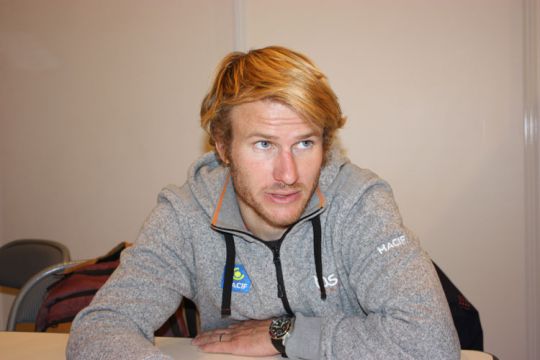
In terms of comfort, how is the boat in flight?
It's different because it goes fast and brings a form of discomfort when you start flying. In Archimedean mode the boat will hit the wave, when you start flying in the small waves, you can get over it so you feel almost nothing. The boat is stable, it sails very flat. It is easier to rest when the boat is flying than when it was in classic Archimedean mode. I'm not saying that it's always comfortable, necessarily with speed you get a little shaken up, but you shouldn't associate flight or foils in general with dangerousness or difficulty.
Can you enjoy it?
All the time, all the time, it's still great. I'm taking full advantage of it because it's just loving these boats. I'm really enjoying this, I love it! This does not mean that it is not difficult and that there is no difficulty in the effort. Physically, you really have to get involved. There is a form of suffering. We are deprived of sleep, there is difficulty, but the sensations of speed, of sliding that we have are crazy. It's my absolute kiff, it's my drug! That's what motivates me. There is a lot at stake, you have to have fun. If you don't enjoy pushing the boat it becomes painful.
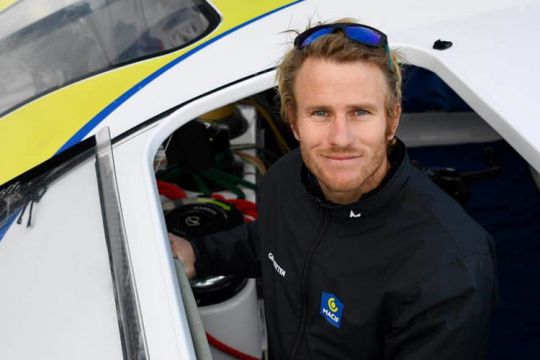
What is your objective for this Route du Rhum?
The objective is to go for victory knowing full well that it will be complicated and very hard. There is competition, but the objective is to have a good race, to give everything, to have no regrets, to do everything to get and play first place.
With the forecasted weather, we hear that it might be possible to beat Loïck Peyron's time, is that an objective?
I don't give a damn about that. Then we took eight days of food, I think. So I'd like to do it in less than 10 days so I don't come in with 10 kilos less. But apart from the food on board if I could win in 15 days, I don't care at all. It's a race. I made records, I enjoyed making records, finding the right weather windows to set off, but that's not the point on this Route du Rhum. The objective is just to get there before the second one. Obviously we're trying to push the limits, if there are times when the conditions allow us to go very fast, I'd be happy to test it. What is certain is that with the performance of our boats, if we have very favourable conditions we can indeed go faster than what Loick did in 2014.
What would be the favourable conditions?
To break a record, you'd need rather flat seas. For speed, that's what's really important. Secondly, stable winds that are not necessarily very strong because we can fly with relatively low wind forces. We take off at 13-14 knots and as soon as there is 20-25 knots of wind we are already almost at the maximum of our maximum speed. If we have more wind without sea, we take. But in general at 35-40 knots, the sea is a little messy whereas when there are 15 knots we often manage to have fairly decent sea conditions.
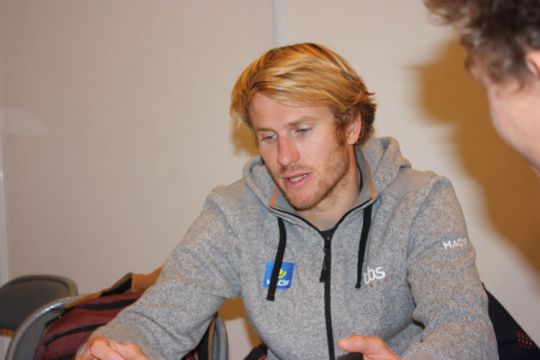
Do you steer on a boat like this?
I don't steer much - on the Route du Rhum I don't really realize it - but on the round the world race we steer very little. We have a lot to do. I'll probably spend more time turning the cranks than steering, that's pretty much a certainty. But if there are conditions where the boat goes faster by steering I won't hesitate. But we've worked a lot on the pilots who work quite well. If there's no obvious reason to steer, I won't. We're so busy, there's so much to do on these boats, it's rare that we have the opportunity to take the helm. It's really a pleasure, but it's really rare.
